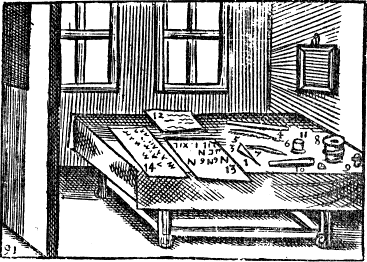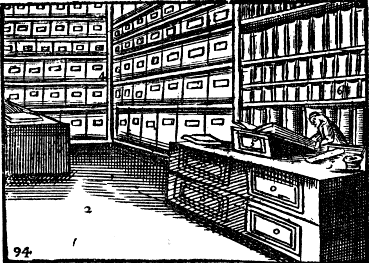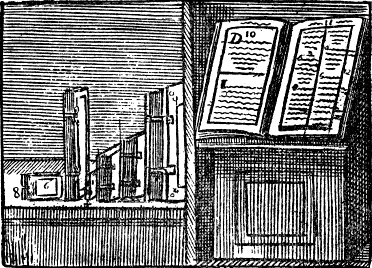JF Ptak Science Books Post 2373
In the late 17th century John Comenius (1592-1670) wrote a book about universal (mostly practical) knowledge called The Visible World..., which also happens to be the first illustrated children's book. It was a book about virtually anything, and everything, and certainly not a book about nothing, because sooner of later Comenius would get to the topic and deal with it, right or wrong.
The book was originally written in 1676, and translated into English in 1726; in that edition the translator states the purpose of the work:
To entice witty children to it, that they may not conceit a torment to be in the school, but dainty/are., For it is apparent, that children (even from their infancy almost) are delighted with Pictures, and willingly please their eyes with these fights: And it will be very well worth the pains to have once brought it to pafs, that fcare-crows may be taken away out of Wifdom's Gardens..."
The sections on writing and writing instruments and books are very engaging--they are short and concise, and all of the practicing elements of the illustrations are labelled and identified, which is a major bonus.
On Writing
[Images from John Comenius, Orbis Senfualium Piélus: Omnium Principalium in Mundo Rerun/ &f m Vita Alопит, translated as Pictura et Nomenclatur, the Visible World, or A Nomenclature, and Pictures of all Chief Things that are int he World, translated into English by Charles Hoof...1726. See an earlier post here for more on Comenius. Image Source: PROJECT GUTENBERG.]
The Ancients writ
in Tables done over with wax
with a brazen Poitrel, 1.
with the sharp end, 2. whereof
letters were engraven
and rubbed out again
with the broad end, 3.
Afterwards
they writ Letters
with a small Reed, 4.
We use a Goose-quill, 5.
the Stem, 6. of which
we make
with a Pen-knife, 7.
then we dip the Neb
in an Ink-horn, 8.
which is stopped
with a Stopple, 9.
and we put our Pens,
into a Pennar, 10.
We dry a Writing
13with Blotting-paper,
or Calis-sand
out of a Sand-box, 11.
And we indeed
write from the left hand
towards the right, 12.
the Hebrews
from the right hand
towards the left, 13.
the Chinese and other Indians,
from the top
downwards, 14.
The Bookseller
The Bookseller, 1
selleth Books
in a Booksellers Shop, 2.
of which he writeth
a Catalogue, 3.
The Books are placed
on Shelves, 4.
and are laid open for use
upon a Desk, 5
A Multitude of Books
is called a Library, 6
A Book
A Book
as to its outward shape,
is either in Folio, 1.
or in Quarto, 2.
in Octavo, 3.
in Duodecimo, 4.
either made to open Side-wise, 5.
or Long-wise, 6.
with Brazen Clasps, 7.
or Strings, 8.
and Square-bofles, 9.
Within are Leaves, 10.
with two Pages,
sometimes divided
with Columns, 11. and
Marginal Notes, 12.






Comments